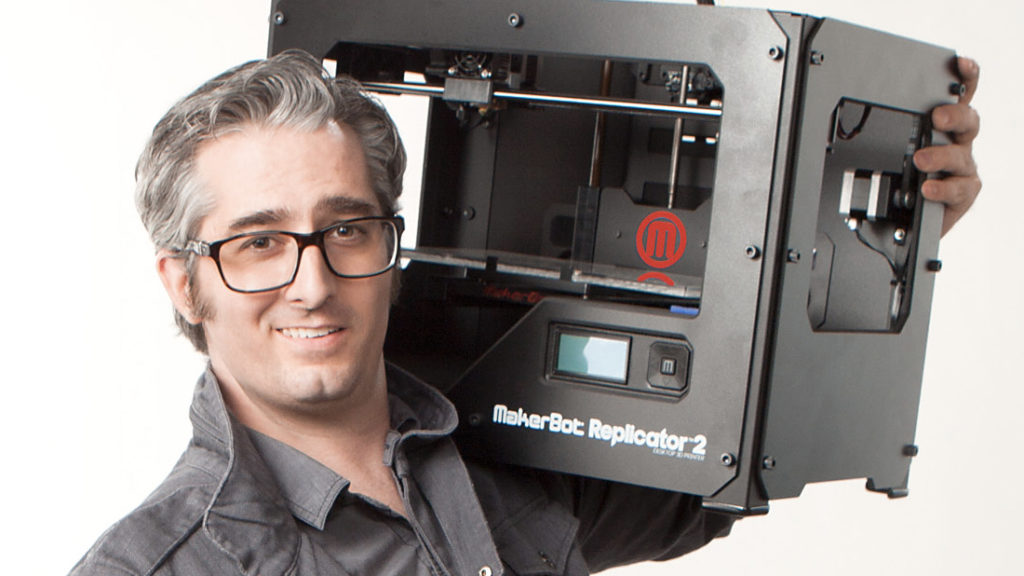Without doubt, MakerBot is the first brand to stand out in bringing 3D printing into mainstream culture.
No 3D printing company in the world has hit the headlines more, making it the first brand that the majority of makers, designers and the simply curious visualise when thinking of having this technology on their desks.
The latest Replicator 2X, with a heated build platform and dual material output, is MakerBot Industries’ most visible product to date, yet it’s the company’s co-founder and CEO Bre Pettis that remains the most recognisable figurehead of the brand.
“It’s science fiction for most people – they just don’t understand what it is, and when we explain it, it sounds like I might as well be talking about flying cars or teleporting!” says Pettis, wearing his now trademark thick-rimmed glasses and quiff of silvering hair.
One of the most enigmatic, globetrotting figures in the industry, it came almost as a shock to find him sat at the main desk of the MakerBot store on Mulberry St, New York, on a Thursday evening.
“Having a store gives us the ability to let people touch things, hold them in their hands, feel how a MakerBot print feels. And also, because we can make things, we can make products and sell them in the store, like jewellery.
“People look at what it costs, and maybe it’s like $25, but [the part] only costs $1 to make… so people can directly see the value of ‘making it yourself’.”
The store sells the machines, but also the spools of materials, parts printed from a MakerBot to take home, as well as books, t-shirts and other branded goods.
The store is also home to its 3D Photobooth to scan your own likeness, and a team of sales people that are extremely enthusiastic.
Selling it to any man, woman or child that walks in off the street is a first for 3D printers, but its place as a professional solution is still key. The biggest customer of the Replicator 1 and 2 is NASA; the second is JPL (Jet Propulsion Laboratory, a federally funded research and development centre), and its third is General Electric.
“When you have it on your desk and the material is so cheap, that you can make [prototypes], and if you don’t like it you can just throw it away.
“One of the core values of MakerBot is that you can fail as many times as you need to, to achieve perfection.”
Despite its meteoric ascent, it’s in a cheerful manner that Pettis dispels the rise of 3D printing as overblown.
“This is still the beginning, people are just beginning to learn about it. It’s been a secret for so long that now that people are discovering it, of course they’re excited!
“People call it hype when there’s nothing to back it up, but 3D printing is the opportunity for people to create businesses, the opportunities for creative explorers to make anything they want – we’re just at the beginning.
“It gets really exciting when you think about the next generation,” he continues. “When they grow up thinking about solving problems themselves instead of buying solutions, then you start solving real-world problems at a massive level.”






